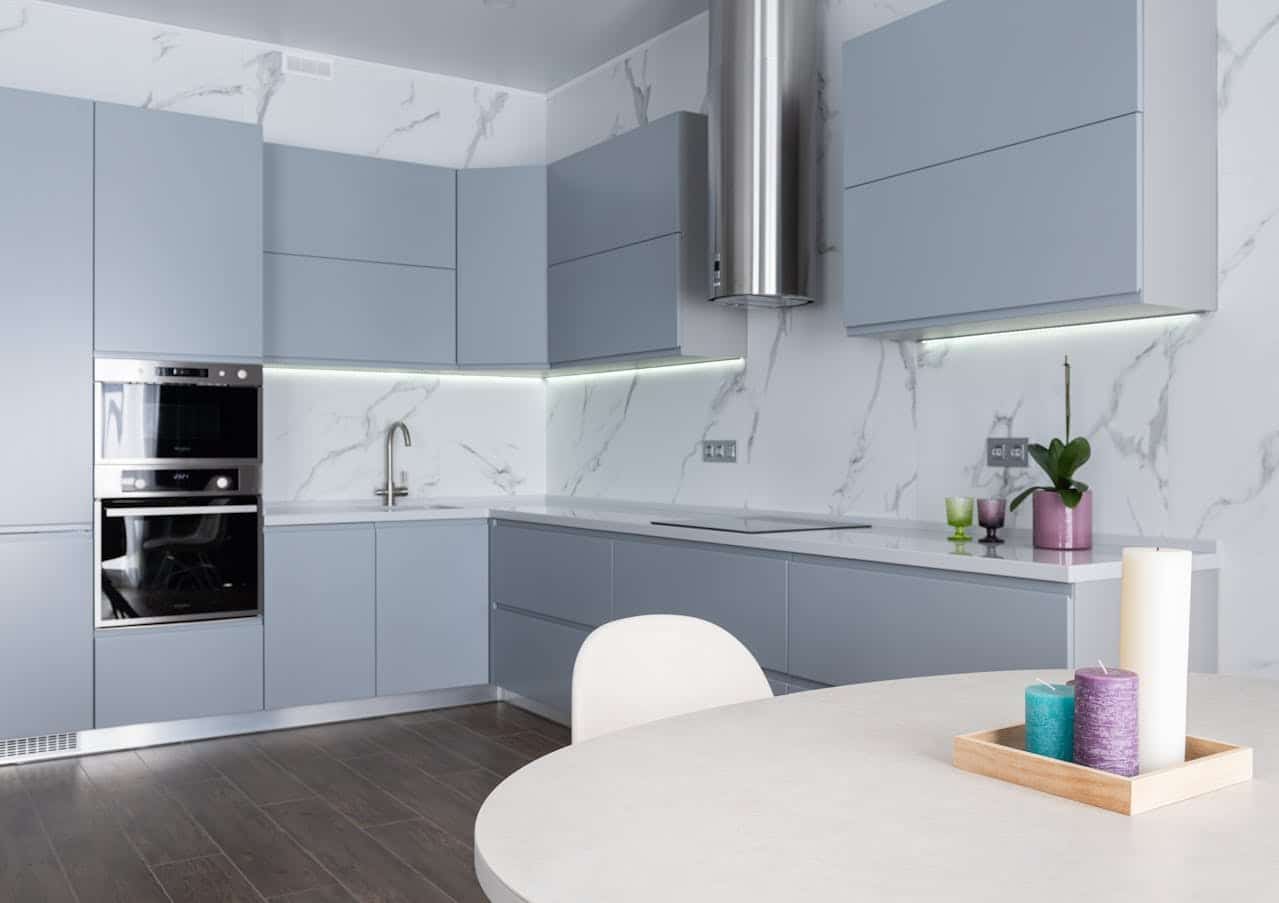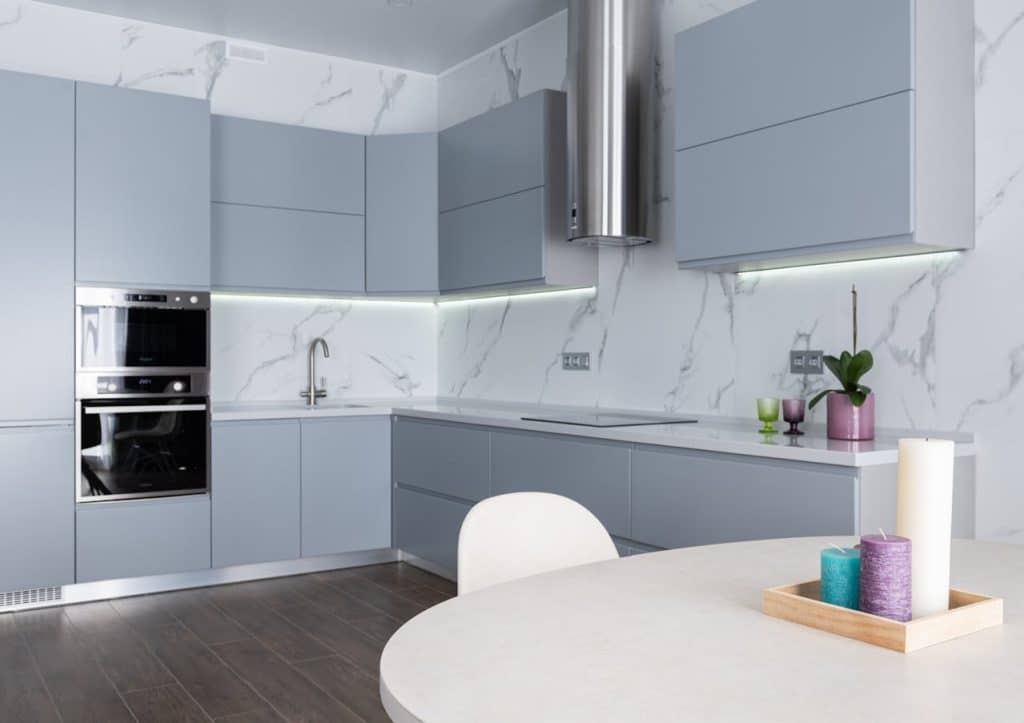Key Takeaways
- About how DIY faucet repairs tend to escalate.
- DIY faucet repairs can cause bigger problems. Using the wrong parts or tools when repairing a faucet can lead to leaks and may even damage important plumbing parts.
- Overtightening connections and bad sealing habits are frequent mistakes that can cause new leaks, strip threads, and cause long-term water damage in your house.
- Leaking DIY repairs that go unnoticed not only waste water but can cause higher utility bills, expensive water damage remediation, and premature fixture replacement.
- DIY repairs can damage the valve integrity, miss supply line issues, and pose safety, warranty, and code violation risks.
- If you experience persistent leaks, low water pressure, or unusual plumbing noises, they’re symptoms of bigger problems and the moment to put down your wrench and call a licensed expert for trustworthy repairs.
DIY faucet repairs lead to bigger problems because most people either skip important steps or use the wrong parts. Most faucets have tiny seals, washers, and valves that must fit tightly for the system to operate correctly. If the incorrect tool is employed or a piece is jammed, leaks can initiate or pipes can fracture. Slow drips become fast leaks that rot cabinets or walls. Water pressure can drop or pipes clog from muck left in the wake. Almost all guides online do not demonstrate real fixes for all faucet types, so errors are common. To understand the source of these problems, it’s useful to understand why even tiny mistakes can cause bigger and bigger repair needs over time.

The Chain Reaction Of DIY Faucet Fixes
DIY faucet repairs may look tempting in terms of saving money and delivering an instant feeling of self-sufficiency. Most problems with home plumbing, particularly faucets, tend to be related. Errors in DIY repair will take small inconveniences and turn them into big, expensive destruction. Worse, band-aid solutions, such as duct tape or quick sealants, cover the issue but do not cure it. Industry research shows that almost 50 percent of all DIY repairs require professional repair within a year, and that costs double or even triple when mistakes are made. Homeowners may risk voiding warranties, violating local codes, or even having insurance claims denied. Below are key misdiagnosis issues that often lead to further faucet problems:
- Assuming a leak is from a worn washer instead of a cracked valve seat.
- Failing to spot corrosion hidden inside faucet bodies
- Overlooking uneven subfloors that misalign plumbing connections
- Guessing if water is leaking on or under the sink.
- Ignoring underlying electrical hazards in damp environments
1. Misdiagnosis
Misdiagnosing a faucet problem. As the cascade of DIY repair problems begins, they confuse a slow drip for a worn washer, when in reality, corrosion or a cracked valve seat may be the culprit. This can result in unneeded parts being swapped, bypassing the true fault and exacerbating it as the problem escalates.
Right assumptions about where the leaks are coming from result in patchwork repairs. A leak under the sink can be misdiagnosed as a seal failure, but it might actually be coming from a loose supply line behind the wall. Water can leak for weeks without notice and ruin cabinetry, floors, or even structural supports.
2. Wrong Parts
Installing the wrong or incompatible faucet parts is a common mistake. If a part doesn’t have the exact original specifications, it might not fit tightly, resulting in continuing leaks. Ill-fitting parts might wear faster or stress other plumbing components, creating a cascade of do-it-yourself repair problems.
Putting in the wrong faucet kit can throw off the scavenging of your whole system. Eventually, this can cause uneven water pressure, noisy pipes, or even busted fittings, driving up expenses and hazards.
3. Improper Tools
Access to the right tools is essential for performing safe and effective repairs. Specialized wrenches or torque tools help prevent overtightening or stripping threads. Jury-rigged tools, like pliers or normal screwdrivers, can slip and ruin delicate faucet parts, leaving fittings loose or skewed.
Inadequate tools just cause fittings that appear tight but gradually leak or break down, particularly when subjected to recurring water hammer. These mistakes, over time, spiral costs out of control and can lead to having to replace entire assemblies.
4. Overtightening
Overtightening is a related source of strife. When connections are pushed beyond their intended limits, threads can strip and seals can deform, causing new leaks with the right torque applied to each joint.
Certain faucet assemblies are constructed from softer metals or plastics, and they can be particularly susceptible to overtightening. Ruined threads or crushed gaskets may be out of sight and out of mind initially, but they always end up leaking and getting worse.
5. Poor Sealing
A good seal keeps water where it belongs. If it is not properly sealed, with the wrong type or amount of sealant, water can leak out around joints. Even a small leak can cause significant water damage over weeks or months, like mold growth, rot, or ruined flooring.
Something like a strip of tape or an all-purpose masticant seldom stands the test of time and can mask the true severity of an issue. Good sealing involves scrupulous cleaning, the right compound, and careful assembly. These are things that get overlooked in hurried amateur repairs.
Hidden Costs Of DIY Faucet Fixes
Fixing a faucet by yourself might seem like a smart way to save money, but it can actually lead to bigger expenses. Problems like hidden leaks, unnoticed water damage, and the need for new parts can quickly add up. Here’s a quick look at where these unexpected costs can happen:
- Fixing water damage can run you anywhere from $500 to $5,000, depending on severity and location.
- Unnoticed leaks caused by bad fixes can add seventy to one hundred dollars or more to yearly water bills, while one dripping faucet can waste as much as three thousand gallons a year.
- A running toilet, most commonly caused by a bad DIY repair, can leak as much as 200 gallons of water a day, totaling approximately $800 a year.
- A replacement of fixtures and pipes wrecked by a bad DIY job can run thousands, particularly if the pipes are old and made of galvanized steel or polybutylene.
- Insurance premiums might go up if you have to claim due to repeated water damage, further increasing the cost.
Water Damage
Indicators of water damage due to faulty repairs are wall or ceiling stains, buckled floors, and mildew growth. Sometimes, these issues aren’t immediately apparent. Secret leaks inside walls, below the slab, or behind cabinets can go unnoticed until harm is extensive.
Over time, water damage results in expensive repair costs. Mold remediation, replacing drywall, and fixing corroded pipes can all add up fast. If water penetrates joists or beams, repair costs can rise even more. Homeowners could face higher insurance costs if claims are filed multiple times because of a persistent leak.
Higher Bills
A minor dripping leak might not sound dire, but it can squander a surprising amount of water. Keeping an eye on your water bill can help spot these problems early. An unexplained spike in consumption is frequently an indicator of leaks behind the scenes.
Even slow drips accumulate. Leaky faucets and running toilets, for example, are typical culprits. Over time, that wasted water can add up to a significant cost, straining both your finances and your local resources needlessly. Neglecting these problems can exacerbate them, driving up monthly payments and your total costs.
Replacement Costs
When a DIY repair turns bad, the price of new fixtures or professional help can be high. Faucets and plumbing parts aren’t always inexpensive to replace, particularly if damage extends to pipes or connections.
Surprise costs creep in when homeowners have to call in the pros after attempts to fix things go wrong. If you’re working with old or poor materials, replacement becomes that much more expensive. Frequent repair attempts can cause chronic problems, which get expensive and make insurance more costly.

More Than Just A Simple Leak
A drip may be a harbinger of something worse. DIY quick fixes, while apparently saving you money and time, can cause the problems beneath the visible drip. The real issue could be listening deeper in the pipes, impacting valves, pressure, and lines of supply. These invisible drips matter to system reliability and the long-term cost of water use. This means wasted water, wasted bills, and possible property damage.
Valve Integrity
Faucet valves are engineered mechanical devices that regulate flow and shut off water. When at-home fixes use incorrect tools or install incompatible pieces, the fragile equilibrium inside the valve can be disrupted. This leaves a poor seal, and water can drip, even when the faucet is off. As time goes on, these faults can increase the drip rate, resulting in over 3,000 gallons of potentially wasted water a year per faucet. Every drop contributes to the monthly bill, and the total over a year can exceed $24 for a single malfunctioning tap. Forgotten valves may facilitate faster corrosion and scaling, which can compound the valve’s reduced ability to move freely. In areas suffering from water scarcity, the ecological cost ripples further, taxing local reserves and water treatment facilities.
Water Pressure
Water pressure, when unmeasured, can stress both the faucet and the greater plumbing system. Too much pressure is often the result of half-done DIY repairs, where pressure-reducing valves are forgotten or improperly adjusted. High water pressure can create new leaks or exacerbate old ones, at times forcing water past frayed washers or fractured seals. That can lead to property damage anywhere from waterlogged cabinets to buckled floors, which typically runs about $1,000 to $5,000 to fix. Even small leaks can waste thousands of gallons a year, increasing your utility bills and household humidity. This can result in more frequent soap and toothpaste scum buildup, compounding faucet degradation.
Supply Lines
Supply lines are typically concealed behind walls or under cabinets, which means they can be easy to overlook during a DIY patch job. These flexible hoses or rigid pipes deliver water from the main line to the faucet. If left unchecked, aged or brittle supply lines act as a hidden Achilles’ heel, susceptible to leaks or unexpected outbreaks. Sloppy, loose connections or badly fitted couplings are even more dangerous, impeding water flow and causing contamination. Even a minor, unseen drip can waste over 10,000 gallons annually, increasing energy and water bills by approximately 10 percent. It may cause some damage to the structure or mold if the leak goes unnoticed. Basic measures, such as securing fittings or exchanging older hoses, go a long way, but are often neglected in DIY endeavors.
The Hidden Risks
DIY faucet repairs may appear to be a cheap fix. They are a concealment of underlying damages. Most people don’t realize the technical and regulatory nuances of plumbing work, which can result in unintended, expensive consequences.
- Strains and cuts from sharp tools or broken fixtures
- Risk of electric shock if working near power sources
- Eye injuries from flying debris or pressurized water
- Strain injuries from heavy lifting, particularly when reaching inaccessible pipes.
- Exposure to mold, bacteria, or chemicals in old plumbing
- Slips and falls on wet floors
Personal Injury
Even simple repairs expose you to danger if you’re not taking the proper safety measures. Few consider eye protection, gloves, or non-slip shoes, and the consequences can be painful or hazardous. Plumbing systems combine water and occasionally electricity. Without GFCIs or basic wiring safety knowledge, there’s a genuine risk of electric shock, particularly in older dwellings or flats.
Improper training with specialized tools like basin wrenches or pipe cutters can cause significant injuries. Newbies might miss mold or bacteria in leaks, leaving themselves vulnerable to health risks. Not knowing the plumbing layouts can lead to breaking pipes or fixtures that cause hidden leaks. These leaks could seep for months, causing structural rot and mold.
Warranty Void
Most manufacturers insist on repairs being carried out by licensed technicians to keep the warranty valid. If you attempt to repair a faucet and damage something, you’re out of luck for both the fixture and the appliances hooked up to it! This can turn out to be much more expensive than the initial repair, particularly if you have to replace a high-end fixture or treat water damage.
The long-term implications are grave. After the warranty voids, you’re on the hook for future breakdowns, malfunctions, and water damage repairs. If a leak results in thousands of dollars in structural repairs or mold removal, insurance could deny claims due to unapproved work.
Code Violations
There are local plumbing codes and permit requirements that are there to keep homes safe and efficient. Most countries and cities have regulations on who can perform plumbing and how it has to be done. If a DIY repair doesn’t comply, it can incur fines or force corrections, especially at inspection or sale!
Noncompliance can slip through the cracks until there’s an issue. Water lost from leaks, invisible to the non-expert eye, can lead to hundreds of liters wasted daily. When code violations are found, they typically necessitate expensive rework by certified professionals. At worst, insurance might not cover water damage if repairs weren’t code-compliant.
When To Stop DIY
Understanding when to quit DIY faucet repair can save you big headaches and big costs. Knowing when to call in the pros saves stress and prevents harm that’s difficult to mend. Use this checklist to help: persistent leaks, low water pressure, strange noises, recurring clogs, and multiple drains affected. If any of these appear, then it’s time to rethink the DIY path.
Persistent Leaks
A drip that won’t quit after multiple repair attempts is a tip-off to a more significant problem. Sometimes a frayed washer or loose connection is simply there. Leaking that returns or worsens suggests water is leaking behind walls or beneath floors. Turning a blind eye to these leaks endangers the water damage that can spread, rot wood, or cause mold. Repairs in this area get costly and complicated, fast.
Long-term, slow leaks increase water bills and can cause structural issues. Small leaks aren’t just annoying; they can indicate aging pipes or bad valves that need complete replacement. A professional comes equipped with the right tools to detect all of the sneaky leaks and repair them for good. Saving on professional assistance can feel like a good idea in the moment, but it almost always causes bigger problems down the road.
Low Pressure
If the water comes out slower than usual and the issue doesn’t resolve, it may be an indication that there is a clog or corrosion deep in the system. While a quick DIY fix, like cleaning the aerator, works sometimes, if pressure remains low, the issue could be down in the pipes themselves. Low pressure in multiple faucets is a bigger red flag. There might be a clog, leak, or buildup that only a professional can identify.
A licensed plumber examines the entire system for hidden problems, using specialized equipment to detect and remove blockages. When pressure is low all over the house, waiting too long risks pipe damage or even bursts, which are far more expensive to repair.
Strange Noises
Gurgling, banging, or whistling noises aren’t normal. These noises can indicate air trapped in the pipes, loose fittings, or water hammer. Other times, they indicate water flow issues or aging parts that require replacement. If you hear new noises or if the noise intensifies, call a professional.
Quick fixes might hush the racket temporarily, but the underlying issue could escalate. It’s best to get a plumber to check before a little issue turns into a big one. Weird noises are frequently a harbinger of future catastrophic breakage.
Professional Repair Benefits
There are real benefits to professional repairs. Professional plumbers have in-depth training and hands-on experience, so they identify issues that wouldn’t be obvious to us. This extends repairs and reduces the risk of leaks or more significant failures. A professional plumber can detect early warning signs, such as tiny leaks behind walls that could cause mold or wood rot. With their expertise, they employ appropriate materials and techniques, so repairs are stable and secure.
Benefit | Licensed Plumber | DIY Repair |
Skill Level | Professional training, certified | Self-taught, limited |
Tool Access | Specialized tools, efficient repair | Basic tools, slower process |
Time Required | 30 minutes for common repairs | Up to a full day |
Risk of Damage | Low, due to experience | High, from errors |
Warranty/Guarantee | Yes, often included | No protection |
Long-term Cost | Lower, prevents future issues | Higher risk of rework |
Safety Assurance | Follows code, ensures safety | May miss safety standards |
Professional repair has its perks. A professional plumber understands how to not only repair a specific issue but also how to diagnose potential issues simultaneously. For instance, while repairing a faucet, they may discover worn seals or pipes that could soon leak. This early catch prevents minor issues from turning into major, expensive fixes down the road. With the right tools, they do it with more speed and less mess. Because they do this work every day, they can accomplish in a half hour what might take a DIYer a full day and skip a cleanup or patch job afterwards.
Time and cash are important. When it comes to repairs, things can go very wrong, very fast. Even a minor error, such as not properly sealing a joint, can lead to leaks, water damage, or mold. It can run you thousands to undo these faux pas, particularly if floors, walls, or wiring are damaged. Professional repair rewards professionals with first-time-trial savings. They provide a warranty or guarantee, so if anything breaks down later on, repairs are included. This gets concern out of your head and safeguards your wallet.
Peace of mind is crucial. When you know repairs are code-safe and guaranteed, you feel confident. Heavy-duty work, like installing toilets or heaters, needs to be done correctly to avoid major risks. A professional plumber provides this guarantee, and their work holds up.
Conclusion
Repairing a faucet yourself sounds simple initially. Leaks and drips seem small, but they conceal bigger trouble. Skipped steps can damage pipes. Wrong parts can break seals. A tiny leak will initiate mold or rust. All of this can drive up expenses quickly. Calling a pro saves time and cash. Plumbers identify wear, measure pressure, and apply the proper tools. They address the cause and not the symptom. Water remains pure, plumbing remains secure, and houses remain arid. Next time water begins to drip or spray, consider the potential danger. Contact an experienced plumber for assistance.
Frequently Asked Questions
1. Why Do DIY Faucet Repairs Often Cause Bigger Issues?
DIY repairs miss hidden issues, like internal leaks or damaged parts. Lacking the right tools and expertise, even minor errors can cause water damage or lead to costlier repairs down the line.
2. What Are The Financial Risks Of Fixing A Faucet Yourself?
Failed repairs can cause larger leaks, concealed water damage, or broken components. These problems lead to more costly professional repairs and add to your water bills over time.
3. Can You Always See The Damage From A Poor DIY Repair?
No, lots of trouble originates in the faucet or piping. Leaks and corrosion can go unnoticed until they cause significant damage, such as mold or structural problems.
4. Is It Safe To Repair A Faucet Without Plumbing Experience?
Not usually safe. The wrong repair can cause leaks, flooding, or contaminated water. Professionals know how to detect and resolve these hazards safely and effectively.
5. When Should You Call A Professional For Faucet Repairs?
Call a professional if you notice persistent leaks, low water pressure, or if you’re not sure about the repair. Complex problems and underground leaks require a professional.
6. What Benefits Do Professional Faucet Repairs Provide?
A pro makes sure the repairs are right the first time, which staves off future issues, saves you money down the line, and protects your home from water damage.
7. How Can DIY Repairs Affect Your Home’s Value?
Substandard repairs can decrease your home’s value by creating either apparent or latent damage. Professional work keeps your property in good shape and prevents expensive future fixes.
Faucet Repair & Kitchen Plumbing In Santa Rosa – Fast, Honest, Local Help
Leaky faucets, low water pressure, or plumbing issues in your kitchen can quickly disrupt your day. Don’t let a small drip or faulty fixture turn into a bigger, costlier problem. The trusted team at Yorkshire Plumbing provides expert faucet repair and kitchen plumbing services to keep your home running smoothly.
With nearly a decade of experience and the right tools for the job, we deliver real solutions, not quick fixes. From repairing worn-out faucets and clearing clogs to upgrading sinks, fixtures, and water lines, our licensed plumbers are ready to help.
Whether you’re dealing with a leaky kitchen faucet, planning a remodel, or facing unexpected plumbing trouble, Yorkshire Plumbing has you covered. Call or message us today for a free estimate. We offer same-day service when possible and are always available for urgent jobs.
Yorkshire Plumbing is your go-to, family-owned team for reliable faucet repair and kitchen plumbing in Santa Rosa.
Disclaimer
The information provided on this website is for general informational and educational purposes only and is not intended as professional plumbing or construction advice. You should consult with a licensed plumber or qualified contractor for guidance specific to your home or situation. Do not rely solely on the content of this site to make decisions about plumbing repairs, installations, or maintenance. While we strive to keep the information current and accurate, it may not reflect the most recent industry standards or code requirements. Yorkshire Plumbing & Drain Services disclaims all liability for any actions taken or not taken based on the content of this site, to the fullest extent permitted by law.






